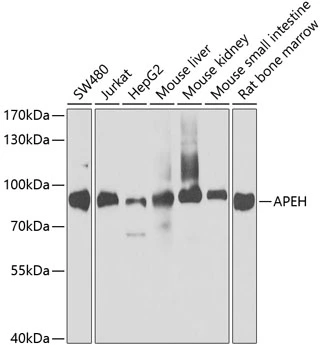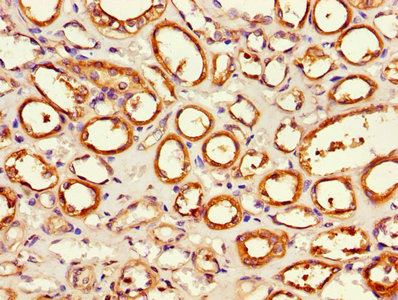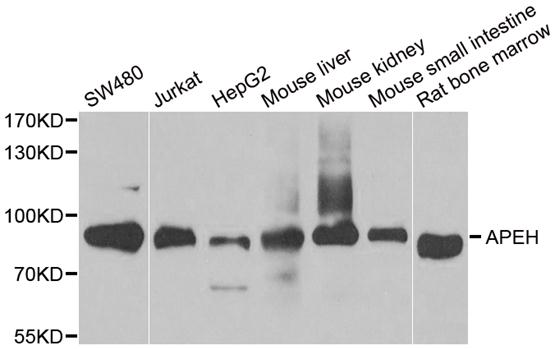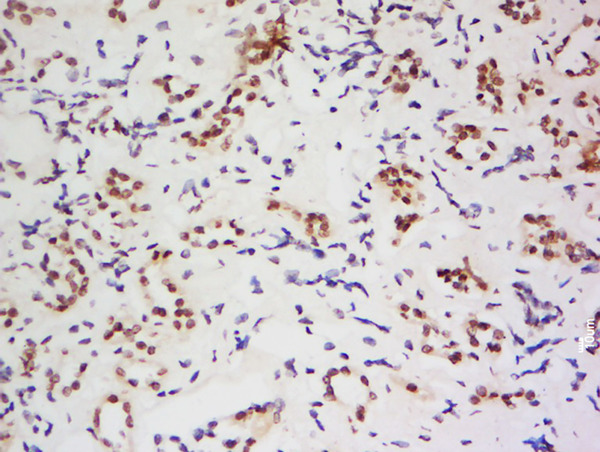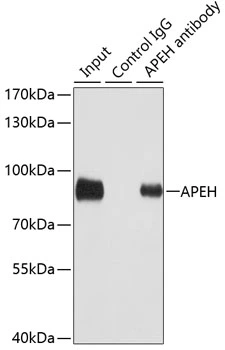
IP analysis of SW480 cell lysate using GTX30054 APEH antibody. Antibody amount : 3microg / 100microg lysate Dilution : 1:1000
APEH antibody
GTX30054
ApplicationsImmunoPrecipitation, Western Blot
Product group Antibodies
TargetAPEH
Overview
- SupplierGeneTex
- Product NameAPEH antibody
- Delivery Days Customer7
- Application Supplier NoteWB: 1:500 - 1:2000. IP: 1:20 - 1:50. *Optimal dilutions/concentrations should be determined by the researcher.Not tested in other applications.
- ApplicationsImmunoPrecipitation, Western Blot
- CertificationResearch Use Only
- ClonalityPolyclonal
- ConjugateUnconjugated
- Gene ID327
- Target nameAPEH
- Target descriptionacylaminoacyl-peptide hydrolase
- Target synonymsAARE, ACPH, APH, D3F15S2, D3S48E, DNF15S2, OPH, acylamino-acid-releasing enzyme, N-acylaminoacyl-peptide hydrolase, acyl-peptide hydrolase, acylaminoacyl-peptidase, oxidized protein hydrolase
- HostRabbit
- IsotypeIgG
- Protein IDP13798
- Protein NameAcylamino-acid-releasing enzyme
- Scientific DescriptionThis gene encodes the enzyme acylpeptide hydrolase, which catalyzes the hydrolysis of the terminal acetylated amino acid preferentially from small acetylated peptides. The acetyl amino acid formed by this hydrolase is further processed to acetate and a free amino acid by an aminoacylase. This gene is located within the same region of chromosome 3 (3p21) as the aminoacylase gene, and deletions at this locus are also associated with a decrease in aminoacylase activity. The acylpeptide hydrolase is a homotetrameric protein of 300 kDa with each subunit consisting of 732 amino acid residues. It can play an important role in destroying oxidatively damaged proteins in living cells. Deletions of this gene locus are found in various types of carcinomas, including small cell lung carcinoma and renal cell carcinoma. [provided by RefSeq, Jul 2008]
- Storage Instruction-20°C or -80°C,2°C to 8°C
- UNSPSC12352203

